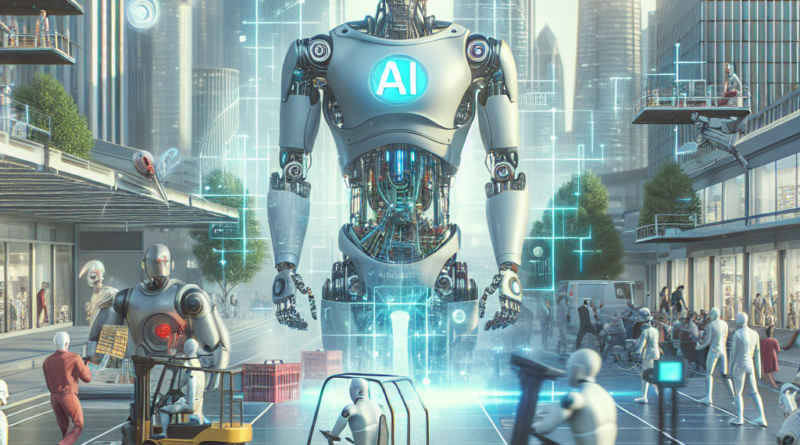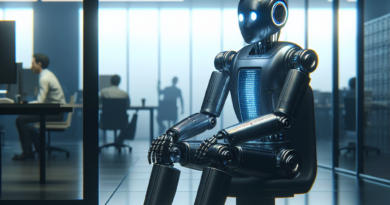Forget AI: The Next Megatrend Will Be Robotics
The Rise of Robotics in Today’s Technology Landscape
Robotics is emerging as an increasingly crucial sector within the global technology landscape.
Despite occasional setbacks, such as those seen in Tesla’s recent event, the potential for growth and innovation in this field is undeniable.
As investors ponder the next megatrend following AI, robotics presents a compelling answer.
But what are the stocks closest to this segment of modern technology? A study of prominent active funds and ETFs reveals some intriguing insights.
Why is Interest in Robotics Growing?
In recent years, artificial intelligence (AI) has captured global attention, sparking a wave of innovations and significant movements in financial markets, with companies like NVIDIA reaching historic highs.
However, the robotics sector could be the next major field poised for technological innovation, and the “We, Robot” event hosted by Tesla in October 2024 further fueled this enthusiasm.
During this event, Tesla showcased its humanoid robot Optimus, which engaged with attendees, serving drinks and even dancing.
Yet, a scandal emerged post-event: despite Elon Musk’s promise of autonomous robots, many were actually controlled by human operators.
Videos shared on social media demonstrated that the robots’ movements were assisted by Tesla employees, highlighting that full autonomy was still distant.
Although this revelation dampened some spirits, excitement for robotics remained strong.
The demonstration, albeit partially staged, showcased tremendous potential for robot applications combined with AI, reigniting interest among investors and industry insiders.
Understanding Robotics
Robots, as defined by Isaac Asimov’s laws of robotics, are machines programmed to perform physical or cognitive tasks that typically require human intervention.
The vision of a world where robots carry out complex tasks is rooted in both science fiction and the ambitions of contemporary tech pioneers.
Today, the advancement of robotics is inherently tied to the evolution of AI, as robots’ ability to interact, learn, and adapt to their environments largely depends on artificial intelligence.
Recent developments in AI solutions are thereby enhancing the growth potential of robotics.
Future Developments in Robotics
When envisioning the future of robotics, we often find ourselves captivated by humanoid figures, believing they herald the start of a robotic revolution.
In reality, we’ve been coexisting with robots for decades, and their impact is evident in various sectors like industry, healthcare, and everyday life.
For instance, Fanuc, a leading player in industrial robotics, has installed over 24 million robots worldwide.
The demand for industrial robots continues to rise; according to the International Federation of Robotics (IFR), over 500,000 new industrial robots were installed in 2022, with annual growth projected at 6% until 2025.
In healthcare, the da Vinci system by Intuitive Surgical has revolutionized minimally invasive surgery, performing over 7 million procedures since its inception.
This robotic system is now utilized in more than 5,500 hospitals globally, enhancing precision and allowing for quicker patient recovery.
Another rapidly expanding domain is service robots, particularly for elder care.
Countries like Japan, facing significant population aging, are expected to see the elder care robot market reach $3 billion by 2025.
Even household robots are gaining popularity, although they are often less “humanoid” than science fiction portrayed.
A prime example is the Roomba vacuum robot by iRobot, which has sold over 40 million units worldwide.
The global home robotics market is set to hit $30 billion by 2026, exhibiting a compound annual growth rate of 20%.
Investing in Robotics via Active Funds and ETFs
One of the most recognizable active investment funds in the sector is Pictet Robotics, which, while not consistently outperforming its benchmark, serves as an interesting starting point for stock picking within the industry.
The top three companies by market capitalization within the fund include:
- Fanuc Corporation: A Japanese leader in industrial robots with a strong global presence.
Fanuc boasts a P/E ratio of approximately 22, benefiting from high-profit margins due to its operational efficiency. - ABB Ltd.: A Swiss multinational, among the leaders in robotics and industrial automation, focusing on AI applications to enhance productivity.
- Keyence Corporation: Another Japanese company, specializing in sensors and artificial vision systems crucial for many industrial robot operations.
For those preferring more passive instruments, the most famous robotics-related ETF is the Global X Robotics & Artificial Intelligence ETF (BOTZ).
A comparison of the top three holdings of BOTZ with those of Pictet Robotics shows overlap with Fanuc, but BOTZ also includes companies like:
- Intuitive Surgical: A leader in robotic surgery with a high P/E ratio, reflecting long-term growth prospects amid rising robotic procedures.
- NVIDIA: Renowned for producing chips used in AI and robotics, a stock already at the center of AI investment discussions.



